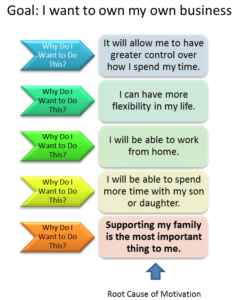
As a society, we tend to avoid difficult conversations – especially at work, because that’s what they are – difficult.
However, one of our mentors, Alexandra Skey, Director of Customer Success at OhmConnect reframes them as critical conversations, because that’s also what they are – critical.
Being open to having critical conversations is a sign of a growth mindset. They are also inevitable. When people are not willing to learn and grow, they may not be able to listen, acknowledge and craft a plan to make things better. With a little bit of self awareness and preparation, you can stop pushing off that critical conversation, sweep it under the rug and walk into it with more confidence and tools.
80% of workers are running in fear from at least one scary conversation at work—a conversation they know they need to have but are dreading.
—A study done by VitalSmarts
We had two amazing senior leaders weigh in at our recent roundtable on the topic to share their experiences, here were the takeaways that can help support you pre-critical conversation:
- Ask for permission – give the other individual a heads up on what you want to address or discuss.
- Have these critical conversations in person, if not applicable then via video. Hold the email or phone call.
- Be curious rather than making assumptions. Go into each conversation and scenario trusting the intention of the others.
- Mindful of how your actions and contributions carry out. Understand you can only control your part.
- Role play – practice with a friend or partner beforehand.
- Be aware of the language you are using. Instead of using terms like difficult, hard or tough conversations label it as critical conversations.
- Set clear expectations.
- Don’t go into it assuming it will get fixed in one conversation, it can take a series of conversations to make any sort of headway.
Jess Hickman, Senior People and Culture Manager shared some actionable resources:
- THE BID MODEL
The BID model can be used for providing feedback or having a challenging conversation:
Start a feedback conversation by being clear on intent and asking permission. Say “Could we talk about our interaction yesterday? I would like to understand it better and ensure we move forward positively.”
- Behavior – like a video without sound. Describe behavior but don`t get into the `story.`
- Impact – describe the impact on you by using “I” statements and ensuring you identify how you feel as well as the overall impact on you/others.
- Desire/difference – what is it you would like to be different, what is the request you would like to make.
2. The 5 Whys
The 5 Whys is a tool to understand the root cause of an issue. Use it to help get clear on the impact the situation has on you. Going deeper then just why but why is this bothering me? Or why is this impacting me or the team?
Example of implementing the 5 Whys:

Resource from Start of Happiness .
To summarize, reframe difficult conversations as critical conversations. Though critical conversations are never easy for anyone, using the tips and tools provided, you can walk into these types of conversations feeling more confident and prepared. Share this post with a manager, colleague or friend.

